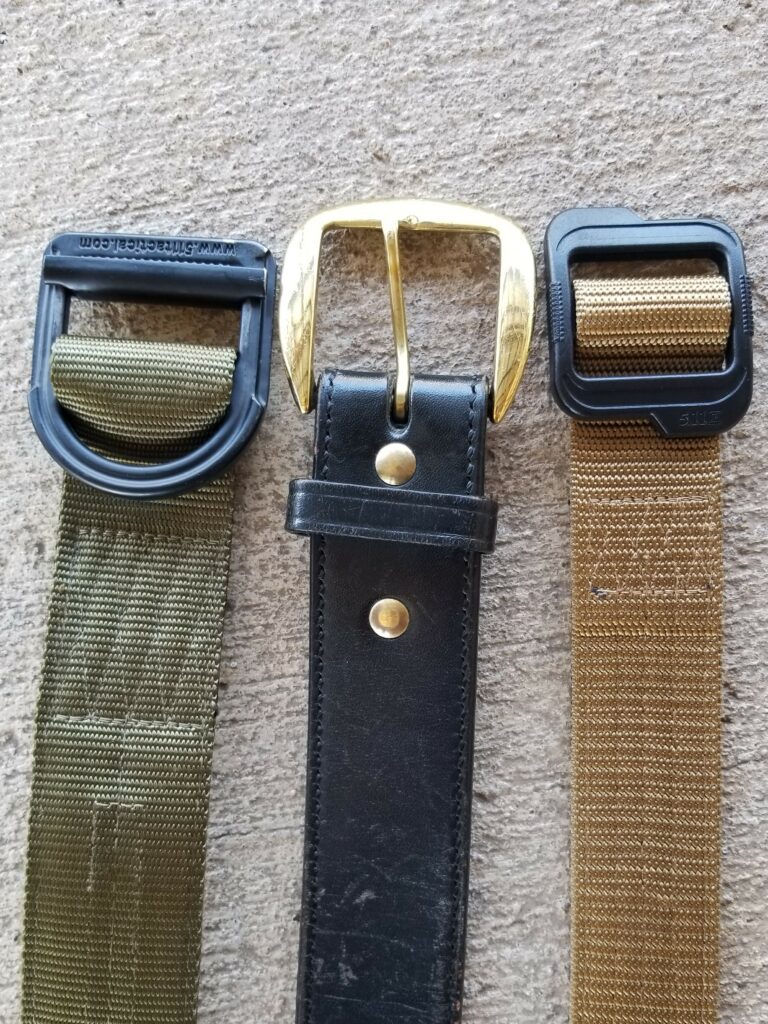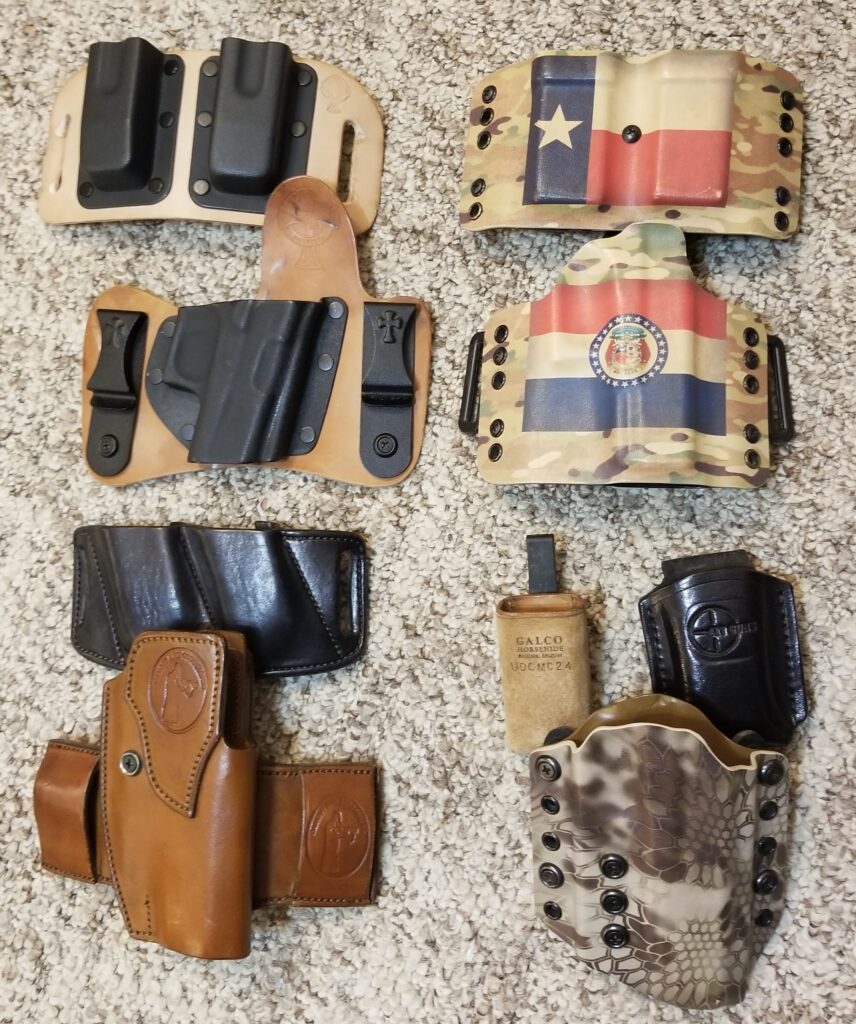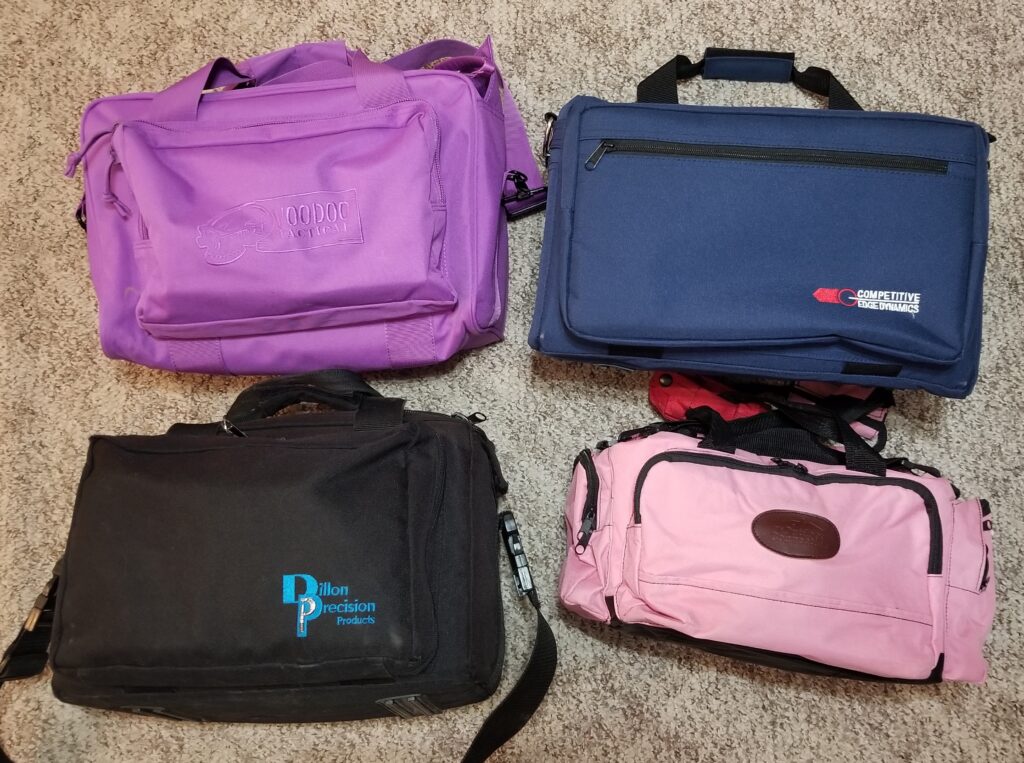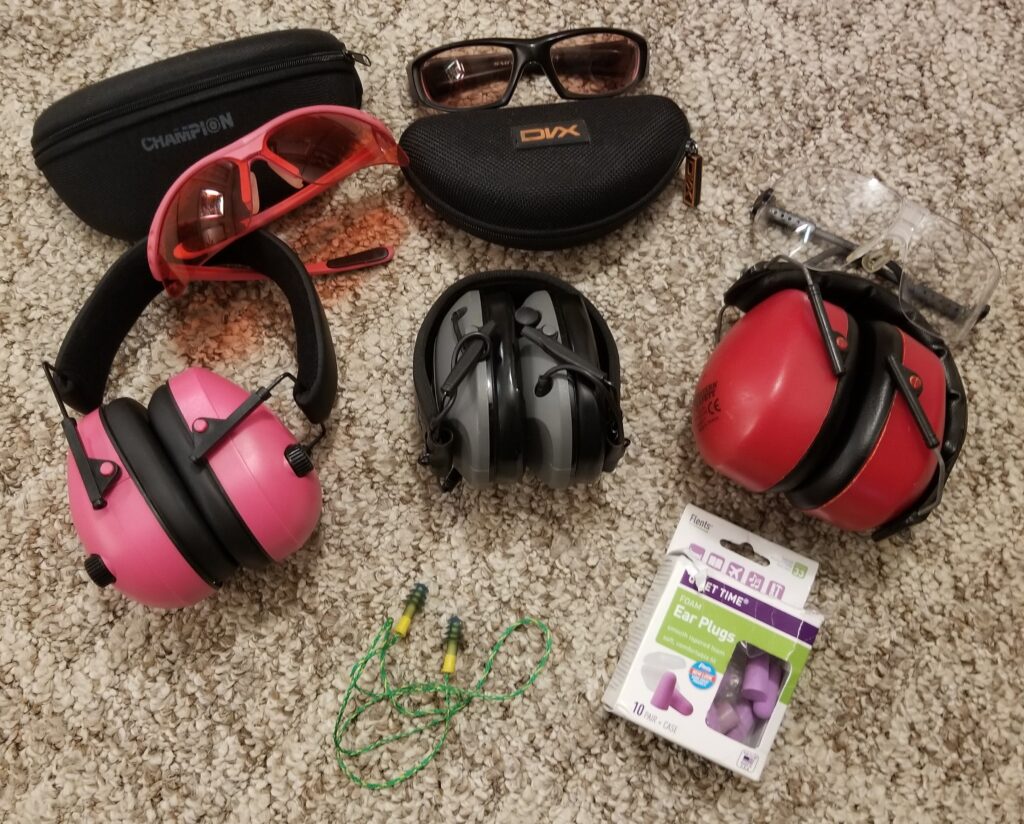With the gun buying frenzy of 2020 and 2021 cooling off, many first-time gun owners and those who are not “gun” people have to be asking themselves, “what now?”
In this blog, I want to address what else you need after your handgun purchase. If you have not bought a pistol yet, hold back! I am working on getting an article out on how the buy the best pistol for you and your needs.
A defensive weapon is no good if you don’t have access to it when it is needed. The best and safest place to store your pistol is on your body, that way you have control over it and know its location. When you are sleeping, that is another matter that depends on your life factors (kids, others in your home et al).
If you plan on carrying the handgun, you must have a quality pistol belt. Your JC Penny’s belt will break and is not designed to support weight. Many tacti cool places sell belts, however if you check, they are not pistol belts. For example, the 5.11 brand has several “TDU” belts. From experience, I can tell you, they are not designed (firm enough) to support a pistol in a holster, let alone extra magazines. It is just too thin. Even their Double Duty TDU belt is barely enough for a G19 and two spare magazines. I have worn Galco leather belts and various Dress and Trainer belts, trying to find what is not too stiff or too soft. I currently am wearing a black nylon Blade-tech Nexbelt (hold off on buying one, I hope to put out a 1-year review in April of 2022).

You will need a quality holster. Not the one size fits none. I wrote in depth about the different types of holsters here: http://the22man.com/2016/05/pistol-conceal-carry-holsters-hip-belt-holsters/
To summarize it, I suggest one of three brands. Ares Tactical (https://www.arestactical.net/product-category/holsters/) Crossbreed Holsters (https://www.crossbreedholsters.com/) or Lenwood (https://lenwood.com/shop/holsters/). You can get belts and magazine pouches from them too.
I also strongly recommend magazine pouches. The old saying “If you can’t get it done with 5 shots…” never applied in real life and sure doesn’t these days when multiple attackers are the norm. In my humble but amazingly accurate opinion, you should carry two spare magazines. Once you take training you will better understand why.
Now that your gun is stored safely on your body, you need to have a place for it when you are asleep.
This is a deeply personal choice that must be thought out even more than the purchase of a gun. Some communist states like New York require you to keep the gun locked up at all times. That defeats the purpose of a self defense weapon.
Here are some thoughts for you to consider. Do others live with you? If so, can they be relied on to leave your handgun alone? I did not keep one on my nightstand until after my youngest was a pre-teen. All my children were raised with firearms in the house and were inoculated to the problem of playing with them. I even left guns out to be sure they knew the rules. If you have children or mentally handicapped people in your home, I strongly encourage several things.
First go through with all of them, and once every year or two the NRA Eddie the Eagle program. It teaches “Stop, don’t touch, leave the room and tell an adult”. Even if you trust those in your house, you have visitors who come and may wander when you are napping.
Hiding the pistol is not the way to go, especially if you are not fully committed to wearing it every waking moment. It will be found and that is a recipe for disaster. If you have adults and those living with you who are taught about not touching the gun have had their curiosity delt with, you may put it in a drawer or on your nightstand while you sleep.
- On the curiosity issue, since this is for new firearm owners, I will presume others in your house will be infatuated with the gun, even if they claim they were raised around guns. The best way to keep them from sneaking a look is to introduce them to the pistol. You are the owner of the property (guns are property) and thus responsible. If you are going to introduce them to your firearm, I have a few suggestions.
1. Remove the ammo from the gun, any magazines and the room before they can even see it.
2. You better know your gun, so take a fundamentals class.
a. You will see them or they will ask how it works so know how to handle it empty
b. Know how to take it apart for cleaning
3. Follow the Universal safety rules that apply everywhere in the universe, not just at the range. https://studentofthegun.com/articles/survive-ccw-class-without-being-shot/
a. All guns are loaded
b. Never point / let the muzzle cover anything you don’t wish to kill or destroy
c. Keep your finger off the trigger until you are on target and made the conscious decision to fire
d. Know your target and what is beyond and around it.
4. Make sure they know the rules above.
5. Show them the gun while you hold the gun.
a. Depending on age and mental accountability you may not want them to handle the gun
6. Know in the future they will need to see and touch it again. Just like sex, the first time was not enough. The same with the fascination of the weapon. At some point it will become mundane and they can be trusted.
I have purchased and used and both my daughters have Hornady quick access safes. If you are asleep and some jack-wagons kick in your back door, you don’t need to be trying to wake up, figure out what is going on and then trying to open a safe. This is what they have https://www.hornadysecurity.com/rapid-safes/2600kp-2700kp#!/ but we didn’t pay near that price. We bought ours here: https://www.natchezss.com/catalogsearch/result/?cat=0&q=2600kp
This safe provides quick access with many options to get into it.
Once you have any firearm you will need a range bag. A range bag will keep all your stuff together for when you go to training and then practice.
While you are free to purchase and own a gun without restriction (no matter what your State or local laws say) I strongly encourage you to get training on the use of your handgun. Going to the range and shooting is not training. To find out the difference, check out my blog post here: http://the22man.com/2019/10/training-vs-practice-there-is-a-difference/
A Range bag is not your kids old school backpack or the “gym bag” you won at the annual work picnic. A range bag is designed with many factors. Strength of material and sewing to hold the weight of all the items you should have, pockets to properly store your handgun, safety gear et al.
There are dozens of makers and each maker has several styles of bags to choose from. It’s your stuff, you choose.
For your range bag, you will want to purchase a quality set of hearing protection. Cheap ear plugs will do for your first training class but you will wish you had purchased electronic ear muffs.
There are two major types of hearing protection, in the ear plugs and over the ear muffs. In the ear are like the foam plugs you have probably used at some point in life and muffs go over the entire ear. All hearing protection is rated by how much it will reduce sound, in dB (decibels). The higher the number of dB reduction the better.
A set that reduces noise by 21 dB is not as good as one that reduces noise by 28dB. While many non-electronic have a higher dB reduction, they also make it harder to hear others when practicing or training. Electronic hearing protection amplifies normal sounds like talking, while shutting off and using their foam to reduce loud noises like gun shots.
Muffs: I have several sets of the Peltor and Howard Leigh in electronic version and several just muffs. muffs tend to stay on better than in the ear plugs, which tend to move around and thus let more noise in (lose their protection). Muffs can go over your baseball hat and hold it on in windy conditions and in cold weather they help keep your ears warm.
The downsides are they get hot in the summer and are difficult to wear over most types of head gear like wool caps, boonie hats et al. At times, my ears get sore due to th4e muffs (the cup actually) rubbing against my eye protection.
Quality electronic versions are under $100. Some come with the ability to connect audio via a cable. Think HAM radio or ‘walkie-talkie’. This option may be useful if you have a team moving about like hunting in a group that spreads out. That is not a beginner situation though.
Inside the ear protection has come an extremely long way since 2000. The old standby foam plugs are ok. They tend to move out of place as you move around, thus are not doing as good of a job as they could. When you take a training class, or are just at the range walking around this happens all too often. The bulk cheap ones give you no excuse not to have them. They don’t interfere with any headgear you are wearing and in summer your ears stay cool (or at least are not heated up from the muffs). I have no personal experience with the electronic ones due to cost. They tend to be very expensive compared to muffs ($400 plus vs $80 plus).
I only use the cheap plugs in combination with ear muffs, when I am going to be around very loud noises such as extended chain saw sessions, indoor gun ranges (that one jackass always brings a rifle), outside where someone has a muzzle break on their rifle (your 5.56 does not need a muzzle break you freak) or where people are shooting 300 Winchester magnum and larger calibers.
Both muff and inner ear electronic versions can come blue tooth enabled so you can listen to music your favorite podcast et al. HOWEVER if you are shooting, don’t do that. I find that very disturbing that you may not be able to hear others warning you of danger.
Besides hearing protection, you must have eye protection. If you have glasses you wear every day, they are not good enough. They are not designed to take the impact if something goes catastrophically wrong. Safety glasses you stole from work probably are not adequate either. Firearms eye protection should meet or exceed ANSI standards for high velocity impacts. Shooting eye protection is dirt cheap especially compared to eye surgery.
Shooting glasses will be tighter to your forehead and wrap around the side of your head. This is to prevent hot brass or pieces of bullets from bouncing in-between them and your face. You can get prescription shooting glasses (which is what I did) or buy safety glasses that fit over your glasses, like here: https://www.amazon.com/dp/B071RSM598/?tag=bgunner-20 or here https://www.amazon.com/Champion-Over-Spec-Ballistic-Glasses-Amber/dp/B007ZNTN7G/?tag=bgunner-20
First aid: I keep a “boo-boo” kit with bandages, alcohol wipes, anti-biotic ointment, pain reliever and more. You will cut or scratch yourself and use that kit, so keep it full.
That is not all you need. As in all of life, things can go bad, so I keep a pocket trauma kit in the bag (and on yourself) at all times. You can read some about them here: http://the22man.com/2015/11/swat-t-tourniquet/ you can take a quick free course called “Stop the Bleed” to give you the very basics. I have built my own version, however, if you prefer to buy pre-made ones, the best I have found are here: https://www.studentofthegungear.com/collections/medical-gear
Other things I keep in my range bag are pens, highlighters, permanent markers, duct tape, empty zip-lock bags, Sun Screen, bug repellent, Chapstick, hand warmers, spiral notepad for taking notes, shooting gloves, staple gun and staples, multi-tool and screw driver that accepts various tips as well as target patches / pasters. On your trip to the range, you will add ammo and targets and maybe a few other items.
A Magazine loader will save your fingers, especially if you have steel lipped magazines like 1911, Walther, and Sig Saur make. I shoot Glocks and thus keep one of the ones they provide in my bag. For years we used the HKS Magazine loaders. However I found a better product and all my family now have the Maglula UpLULA. If you have a revolver, they too have speedloaders.
Don’t get overwhelmed or buy stuff to fill your bag just to fill it. That will come with time.
That is more than enough for now. Take a deep breath and slowly take your time getting prepared with all the above.
Until we meet again, keep your booger hook off the bang switch until you are on target and ready to fire.




One thought on “You bought your first pistol, now what?”
Comments are closed.